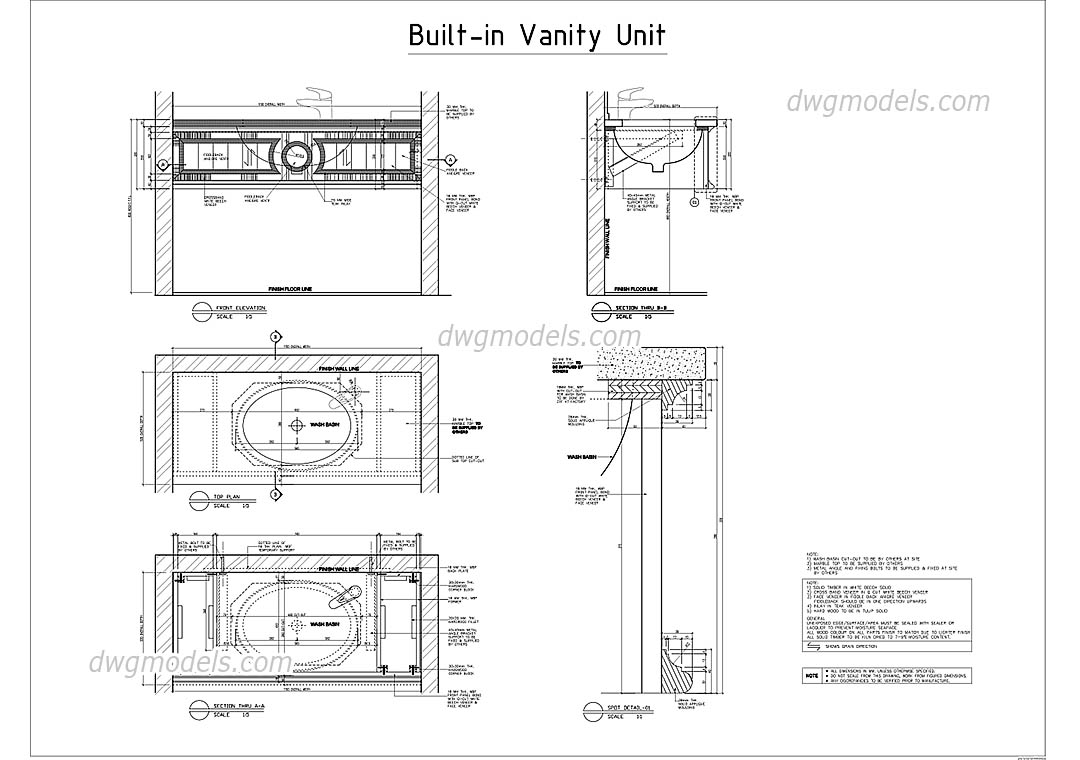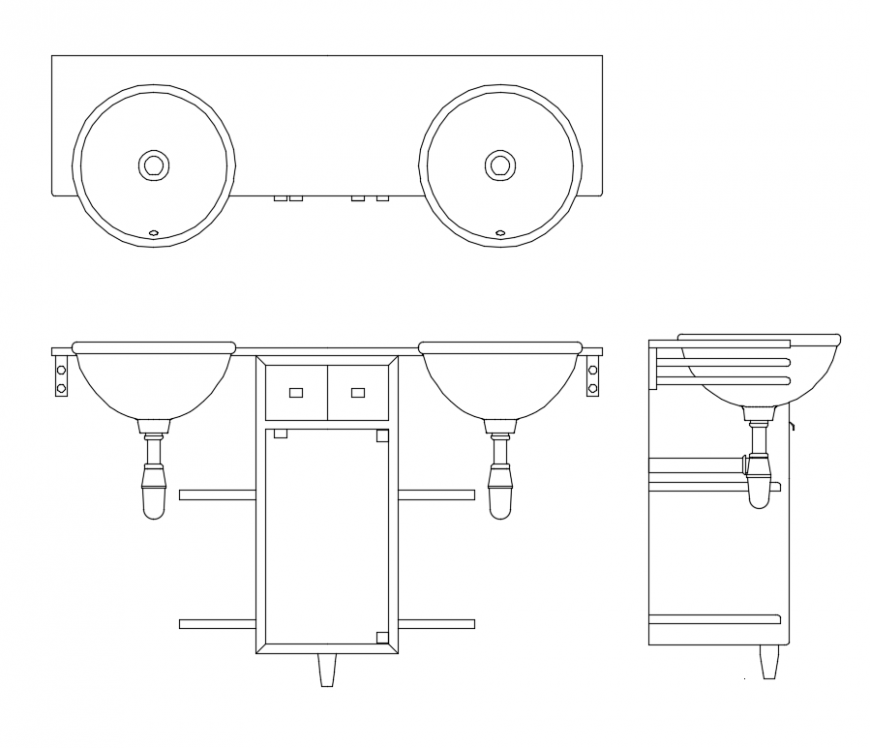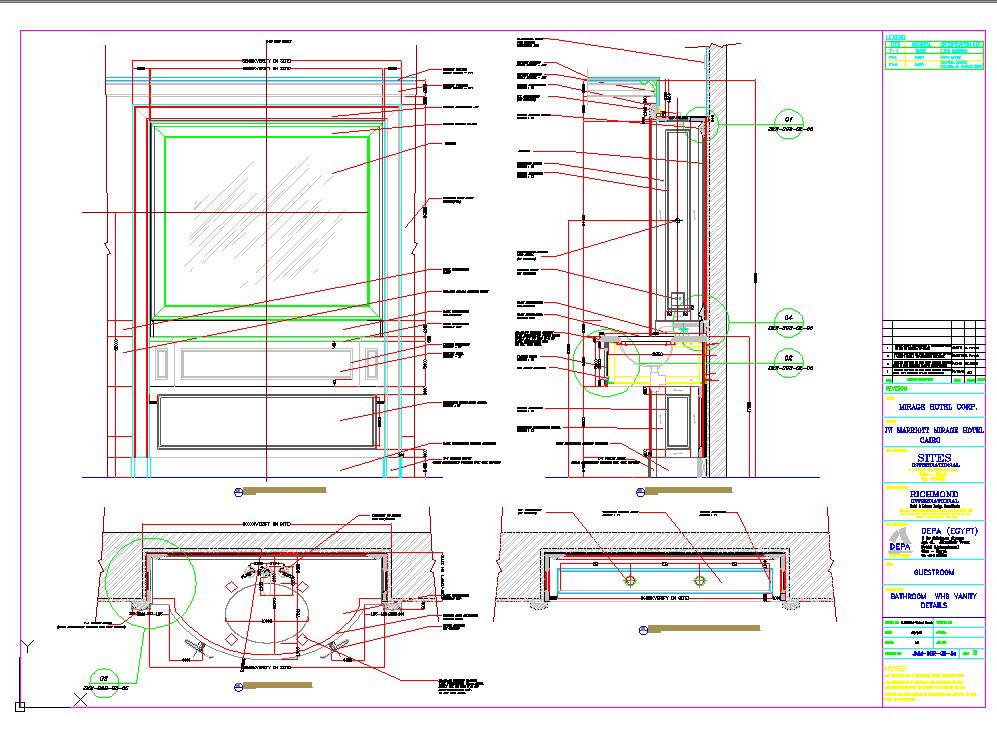The Essential Role of Vanity Unit CAD Blocks in Design and Construction
Related Articles: The Essential Role of Vanity Unit CAD Blocks in Design and Construction
Introduction
In this auspicious occasion, we are delighted to delve into the intriguing topic related to The Essential Role of Vanity Unit CAD Blocks in Design and Construction. Let’s weave interesting information and offer fresh perspectives to the readers.
Table of Content
The Essential Role of Vanity Unit CAD Blocks in Design and Construction

In the realm of architectural and interior design, precision and efficiency are paramount. This is where Computer-Aided Design (CAD) tools play a crucial role, streamlining workflows and ensuring accuracy. Within the broader context of CAD, vanity unit CAD blocks are specialized digital representations of bathroom vanity units, offering a powerful tool for designers, architects, and contractors alike.
Understanding the Importance of Vanity Unit CAD Blocks
Vanity unit CAD blocks are essentially digital blueprints, providing a detailed and accurate representation of a bathroom vanity unit within a CAD environment. These blocks encompass all the essential elements of a vanity unit, including:
- Dimensions: Accurate measurements of width, depth, and height, ensuring precise placement within a design.
- Shape and Style: Detailed outlines and configurations of the vanity unit’s design, including cabinetry, countertop, and sink.
- Materials: Information about the materials used in construction, such as wood type, countertop material, and sink material.
- Hardware: Representation of handles, drawers, doors, and other hardware elements.
Benefits of Using Vanity Unit CAD Blocks
The use of vanity unit CAD blocks offers a multitude of benefits, streamlining design processes and improving project outcomes:
- Enhanced Accuracy and Precision: CAD blocks provide precise dimensions and details, eliminating the possibility of errors and ensuring accurate representation of the vanity unit within a design.
- Time Savings and Efficiency: Pre-designed blocks eliminate the need for manual drafting, saving valuable time and effort during the design process.
- Improved Collaboration: CAD blocks facilitate seamless communication and collaboration between designers, architects, and contractors, ensuring everyone is working with the same accurate information.
- Visual Clarity and Presentation: Realistic 3D representations of vanity units enhance visual clarity and facilitate effective client presentations.
- Cost Reduction: Accurate planning and design minimize the risk of costly mistakes and rework, ultimately contributing to cost savings.
Exploring the Use of Vanity Unit CAD Blocks in Design and Construction
Design Stage:
- Initial Layout Planning: Vanity unit CAD blocks allow designers to quickly and accurately place vanity units within bathroom layouts, exploring different configurations and optimizing space utilization.
- Visualizing Design Concepts: 3D representations of vanity units provide a realistic visual representation of the final design, enabling designers to assess the aesthetics and functionality of various options.
- Material Selection: CAD blocks offer information on materials used in construction, facilitating informed material selection and ensuring consistency with design specifications.
Construction Stage:
- Accurate Construction Drawings: CAD blocks provide detailed construction drawings, ensuring that contractors have all the necessary information to build the vanity unit accurately.
- Pre-fabrication and Assembly: Using CAD blocks, contractors can pre-fabricate components of the vanity unit off-site, minimizing on-site construction time and maximizing efficiency.
- Material Ordering: CAD blocks provide accurate material specifications, facilitating efficient material ordering and minimizing waste.
Beyond the Basics: Advanced Applications
- Customizable Vanity Units: Many CAD blocks offer customization options, allowing designers to adjust dimensions, materials, and hardware to create unique and personalized vanity units.
- Integrated Design Systems: CAD blocks can be seamlessly integrated with other design software, enabling a streamlined workflow and facilitating data sharing between different disciplines.
- Virtual Reality and Augmented Reality: Advanced applications utilize CAD blocks to create immersive virtual and augmented reality experiences, allowing clients to visualize and interact with their bathroom designs before construction begins.
FAQs on Vanity Unit CAD Blocks
1. What are the different types of vanity unit CAD blocks available?
Vanity unit CAD blocks are available in a wide range of styles, sizes, and configurations to suit various design preferences and project requirements. Some common types include:
- Standard Vanity Units: Blocks representing traditional vanity units with a single sink and cabinetry.
- Double Vanity Units: Blocks for vanity units featuring two sinks and double cabinetry.
- Corner Vanity Units: Blocks designed for corner placement, optimizing space utilization in smaller bathrooms.
- Wall-mounted Vanity Units: Blocks for vanity units that are mounted to the wall, offering a modern and space-saving design.
2. Where can I find vanity unit CAD blocks?
Vanity unit CAD blocks are readily available from various sources:
- CAD Block Libraries: Online platforms and websites dedicated to providing a wide selection of CAD blocks, including vanity units.
- Manufacturer Websites: Many manufacturers of bathroom fixtures and furniture offer free or paid CAD blocks of their products on their websites.
- Design Software Providers: Some design software providers offer built-in libraries of CAD blocks, including vanity units.
3. Are vanity unit CAD blocks compatible with different CAD software?
Most vanity unit CAD blocks are available in standard formats such as DWG, DXF, and SKP, ensuring compatibility with various CAD software programs. However, it’s essential to check the compatibility of specific blocks before downloading and using them.
4. How can I use vanity unit CAD blocks effectively?
To use vanity unit CAD blocks effectively, consider the following tips:
- Choose the Right Block: Select a block that accurately represents the desired style, size, and features of the vanity unit.
- Understand Block Attributes: Familiarize yourself with the attributes of the block, such as dimensions, materials, and hardware options.
- Scale and Position Accurately: Ensure that the block is scaled and positioned correctly within your design to maintain accuracy.
- Utilize Block Customization Options: Explore customization options to adjust the block to meet specific design requirements.
- Maintain Consistency: Use the same block throughout your project to ensure consistency and avoid discrepancies.
Conclusion
Vanity unit CAD blocks are invaluable tools for designers, architects, and contractors, streamlining workflows, enhancing accuracy, and improving project outcomes. By leveraging the power of these digital representations, professionals can achieve optimal results in bathroom design and construction, ensuring efficient, accurate, and aesthetically pleasing spaces. The widespread availability of vanity unit CAD blocks, combined with their adaptability and functionality, makes them an indispensable resource for anyone involved in bathroom design and construction projects.








Closure
Thus, we hope this article has provided valuable insights into The Essential Role of Vanity Unit CAD Blocks in Design and Construction. We appreciate your attention to our article. See you in our next article!